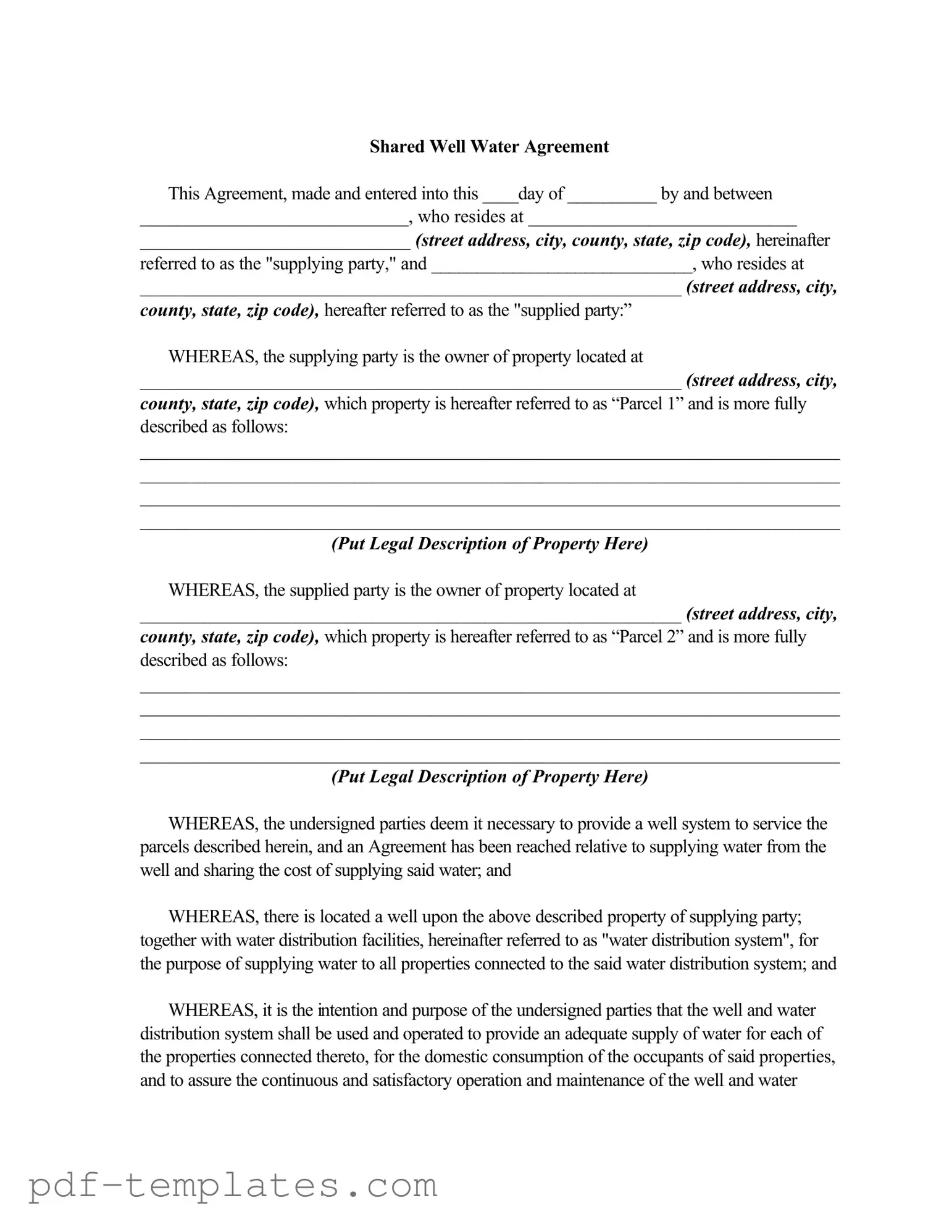The Shared Well Agreement form shares similarities with a Water Supply Agreement, which outlines the terms under which one party provides water to another. Both documents establish rights and responsibilities regarding the use of water resources. A Water Supply Agreement typically details the quantity of water to be supplied, payment terms, and maintenance responsibilities, mirroring the provisions found in the Shared Well Agreement that address payment for water usage and maintenance of the water distribution system.
Another related document is the Easement Agreement, which grants one party the right to use a portion of another party's property for a specific purpose. In the context of the Shared Well Agreement, easements are established for accessing the well and maintaining water distribution systems. Both agreements emphasize the importance of clearly defined rights to ensure that the property owner can utilize their land while allowing others access for necessary functions.
The Trader Joe's application form is a vital document for job seekers wishing to join this beloved grocery chain. It outlines necessary information about potential employees and provides an opportunity to showcase their unique skills and experience. Completing the form accurately can significantly increase the chances of landing a position at one of their stores, and you can access it at documentonline.org/blank-trader-joe-s-application/.
The Joint Use Agreement is another similar document that involves two or more parties sharing resources or facilities. This type of agreement often includes terms about the shared use of property, responsibilities for maintenance, and financial obligations. The Shared Well Agreement functions similarly by stipulating how both parties can access and utilize the well while also outlining their respective responsibilities for upkeep and costs associated with the water supply.
A Partnership Agreement can also be compared to the Shared Well Agreement. In a partnership, parties come together to achieve a common goal, which in this case is the provision of water. Both agreements require clear communication of each party's contributions, responsibilities, and the sharing of costs, ensuring that all parties benefit from the arrangement while also protecting their individual interests.
The Utility Service Agreement is another document that bears resemblance to the Shared Well Agreement. It governs the provision of utility services, including water, to consumers. Similar to the Shared Well Agreement, it includes terms regarding service fees, maintenance responsibilities, and the rights of the parties involved. Both agreements aim to ensure a reliable supply of water while addressing the financial aspects of service provision.
A Lease Agreement may also share similarities with the Shared Well Agreement, particularly when it involves the use of land for specific purposes. In both documents, terms are set regarding the rights of one party to utilize the resources of another party’s property. While a Lease Agreement often pertains to rental terms, the Shared Well Agreement focuses on the shared use of water resources and the responsibilities tied to that use.
The Maintenance Agreement is another relevant document that outlines the responsibilities of parties in maintaining shared property or systems. In the context of the Shared Well Agreement, both documents emphasize the importance of regular maintenance to ensure functionality. Each party's obligations for upkeep and repair are clearly articulated, fostering cooperation and accountability among the involved parties.
The Water Quality Agreement is a document that ensures the safety and quality of water supplied to consumers. This agreement often includes testing protocols and responsibilities for maintaining water quality standards. Similar to the Shared Well Agreement, it emphasizes the importance of safe water for domestic use, ensuring that both parties understand their roles in maintaining water safety.
Lastly, a Community Water System Agreement can be compared to the Shared Well Agreement as it governs the operation of a water system serving multiple households. Both documents include provisions for shared costs, maintenance responsibilities, and the establishment of rights for water use. They aim to ensure that all users have access to clean and adequate water while outlining the necessary obligations of each party involved.
